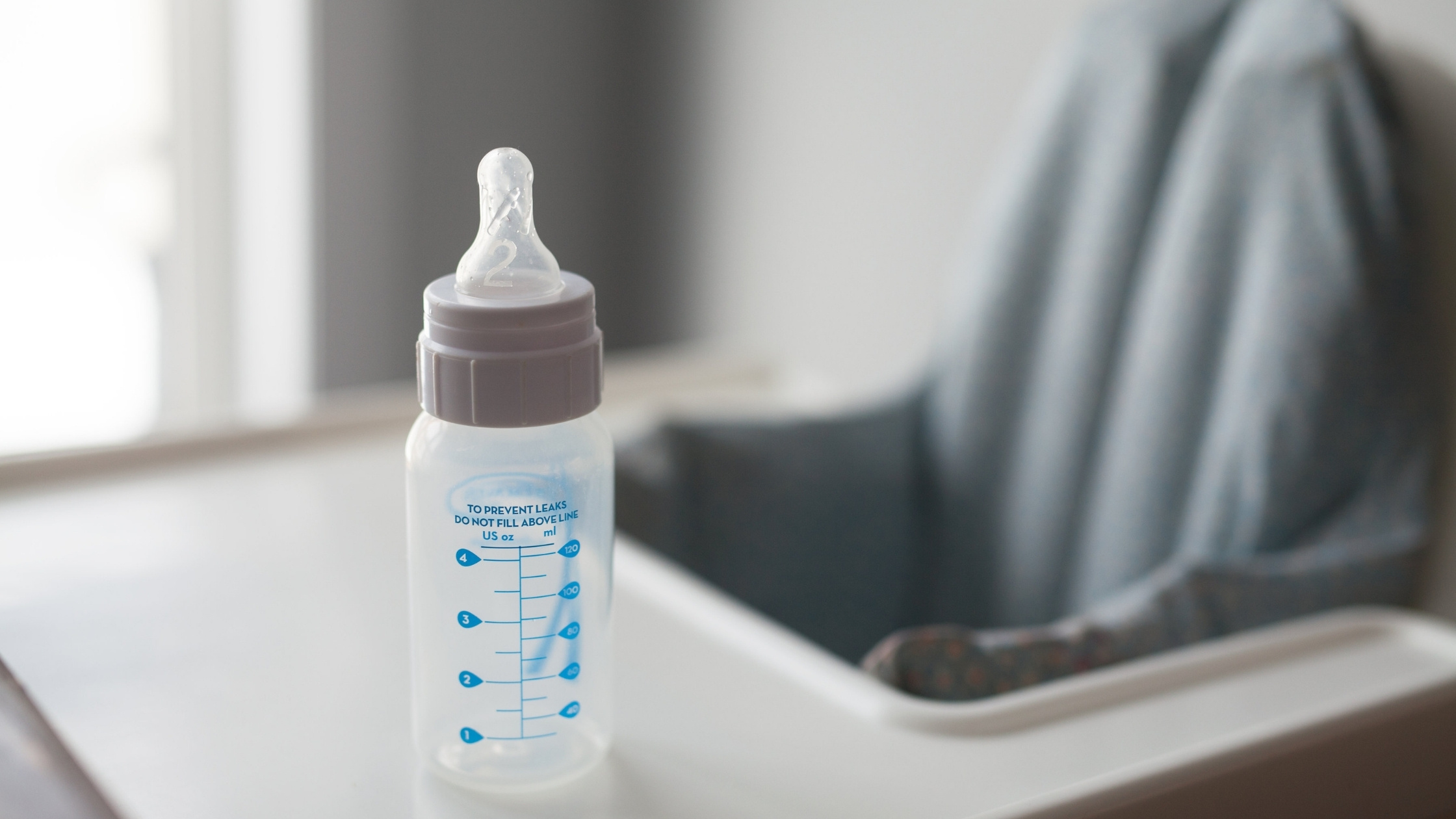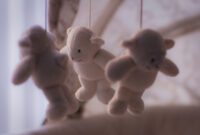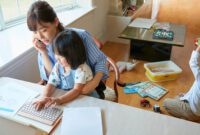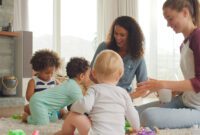Share on Facebook | Follow on Instagram:
It might seem like a simple task, but preparing your baby’s bottles for overnight feedings is one of the most important steps you can take to support smoother nights and a well-rested household. In those early weeks—when newborn life feels especially chaotic—having a safe and efficient system for bottle prep can make all the difference.
After all, a content and well-fed baby is much more likely to fall asleep easily and sleep longer stretches at night—and that’s a win every parent wants!
In today’s blog, we’re walking you through the essentials of overnight bottle preparation, whether you’re using infant formula or pumped breast milk. You’ll learn time-saving strategies, storage safety tips, and best practices to make nighttime feedings calmer and more manageable.
Have tips or a nighttime feeding system that works well for your family? Share in the comments—we love hearing your stories and helping other parents feel supported.
Safe Bottle Prep Matters
Sure, as grown ups, we can cut a few corners and take a few risks when it comes to our food. Maybe we forgot to wash our hands before eating lunch and just realized it as you were laying in bed that night, or maybe you like to pick up gas station sushi on your way home from work for a quick and easy dinner that doesn’t require any dishes. As grown ups, we can be a little fast and loose with our food because our strong immune systems have seen it all (and worse) before and are prepared for it. However, your newborn has no such immune system just yet. As a baby grows and develops and gets stronger everyday, so does their immune system. When they are first born, they are vastly more susceptible to bacterial infections and viral infections than we are. That is why we must always be vigilant about how our baby’s bottles and other feeding devices are prepared so that we can make sure to give them the time they need to build up their defenses naturally.
Let’s Start With What NOT To Do
If nothing else, we hope that you can use these key takeaways when it comes to safely preparing your baby’s bottles for both overnight and daytime feedings.
- Don’t pre-mix powdered formula and leave it at room temp overnight
- In fact, don’t use powdered formula after it has been sitting for two hours. If you make a bottle with powdered formula, it must be used within two hours or it should be immediately discarded. There is no safe way to make powdered formula in advance, even if you keep it in the fridge. It should be made as needed and the bottle immediately rinsed and cleaned.
- Don’t use straight tap water to make a formula bottle. For babies under 3 months old or immunocompromised, the CDC recommends boiling water before mixing with powdered formula to kill Cronobacter sakazakii, a rare but potentially deadly bacteria which is more likely to be present in powered formula vs tap water (although it is possible).
- Boil water and let it cool to at least 158°F (70°C) but no lower than that before mixing with formula.
After mixing, cool the bottle quickly under running water or in an ice bath before feeding.
⚠️ Do not use hot tap water directly to prepare formula; use cold tap water and then boil it if needed.
- Don’t reheat breast milk more than once
- Don’t use leftover breast milk from a previous feed—once a baby drinks from a bottle, it should be used within 1 hour
- Don’t warm bottles in the microwave (for milk or formula)
Best Practices For Sanitizing Bottles
Whether you’re breastfeeding or using formula, you will typically need to have a few sterile bottles on hand, especially if you are able to pump and then store milk for overnight feedings that you need to sleep through while your partner does the feeding. Here are some things you should keep in mind:
- Thoroughly soak all bottle parts like the nipple, bottle, cap, etc in hot water with a good amount (at least 1 to 2 tablespoons) of concentrated dish soap. Let them soak for about 10 to 15 minutes and then scrub them by hand and make sure you run a bottle cleaner through the nipple hole to ensure no bacteria can build up in there.
- Once washed, transfer all parts to a dedicated bottle sterilizer. A sterilizer that also has a dry feature is a nice addition. Here are a few recs: Papabilic, Dr. Browns, Baby Brezza.
- Once sterilized, transfer to a bottle drying rack to make sure everything is completely dry. If wet parts are assembled, mold and bacteria can grow.
- Assemble the dry bottle components, but don’t put the lids on as that also invites bacteria growth. Keep the lids separate until it’s time to use them.
- Store in a cool, dry area that is well away from pets, and cross contamination with food.
- While using a dishwasher for sterilization is an option, it’s not the most ideal as there can be cross contamination with food particles from household dishes.
Before You Go
We hope that this information about safe bottle prep is useful for both you and your baby. If your little one is still fussy after feeds, struggling to settle, or having trouble sleeping, we’re here to support you.
From sleep consulting to in-home sleep training and overnight newborn care or in-home newborn care services, we offer personalized guidance to help your little one (and you!) get the rest you need.
Have questions? Let’s Chat — we’d love to help your family rest easier.
Katie B.
Expertise You Need:
- Certified Master Pediatric Sleep Consultant
- Certified Advanced Newborn Care Specialist (2016-2022)
- Board Certified Holistic Healthcare Practitioner
- 16 years professional childcare experience
- Certified Postpartum Doula (2015-2022)
- Travel & ROTA Nanny
Katie has over 16 years experience working with children of all ages. As a Pediatric Sleep Consultant and Newborn Care Specialist, she has professionally supported families and babies worldwide over the last 10 years. Her mission is to help the entire family unit get better sleep, utilizing a holistic approach that supports the baby or child’s natural biologic drive to sleep. She has personally served hundreds of families, holds 20,000+ hours exclusively caring for infants & babies and has 69+ 5-⭐️ Google reviews.

The content contained in this blog is for informational and al purposes only. It is not intended as medical advice or to replace the advice of any medical professional. It is based on our opinions and experience working with newborns and their families. Other’s opinions may vary. It does not represent the views of any affiliated organizations. The reader understands that the term “Babynurse” is often a word used to describe a newborn caregiver. However, unless otherwise disclosed, we are not licensed nurses in any state. By reading and/or utilizing any information or suggestions contained in this blog, the reader acknowledges that we are not medical professionals and agrees to and waives any claim, known or unknown, past, present or future. This blog may contain affiliate links.
© 2024 Bishop Enterprises, LLC All Rights Reserved
Share on Facebook | Follow on Instagram:
Disclaimer: This content was automatically imported from a third-party source via RSS feed. The original source is: https://www.theearlyweeks.com/how-to-safely-prepare-formula-or-pumped-milk-for-overnight-feedings/?utm_source=rss&utm_medium=rss&utm_campaign=how-to-safely-prepare-formula-or-pumped-milk-for-overnight-feedings. xn--babytilbehr-pgb.com does not claim ownership of this content. All rights remain with the original publisher.



